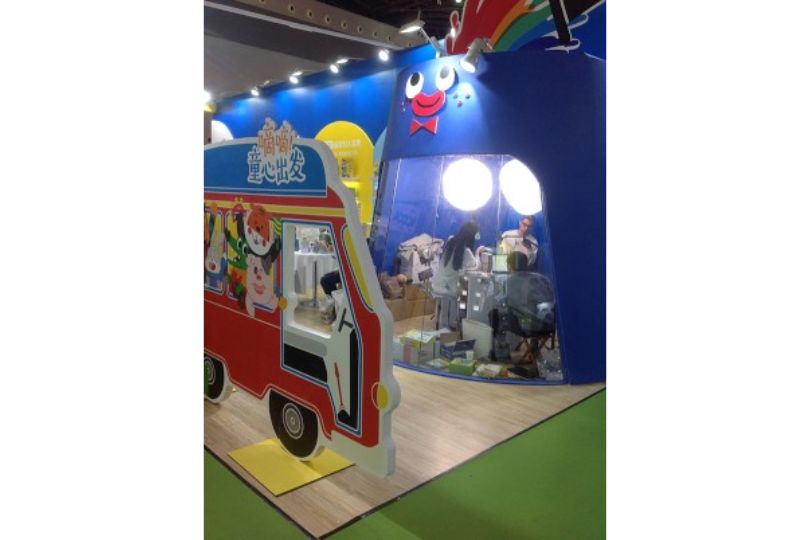Five Chinese Children's Book Market Trends
Explore China's dynamic children's book market, featuring trends in e-commerce sales, cultural storytelling, and the rise of pop-science. Discover the latest at CCBF 2023!on Nov 29, 2023

Understanding what is popular and selling—and what isn't—is critical for anyone interested in and working in the Chinese book business. The opening conference session at the just finished China Shanghai International Children's Book Fair, which included Beijing-based OpenBook, a clearinghouse for publishing statistics in China, was filled to capacity.
The OpenBook market report, which covers the first ten months of 2023, shed light on significant changes in the Chinese book business. During the period, the children's segment accounted for 26.9% of the entire retail book market in the country, despite a 5.4% fall in sales. The section held 28.61% a year ago, a 10.41% decrease.
According to the most recent OpenBook data, sales will climb by 2.2% and 1% in 2020 and 2021, respectively, with a market share of roughly 28%.
1. E-Commerce Channel Rules for Short Videos
This year's CCBF introduced live streaming and vlogging. Some exhibitors, such as Clavis from Belgium, had vloggers promoting and selling books straight from their booths. Influencers were everywhere, visiting booths with selfie sticks and/or gofers in hand, selecting titles that piqued their interest, and quickly expressing their impressions with their followers.
According to OpenBook, the short-video e-commerce channel (via TikTok, Xiaohongshu, Weibo, and WeChat applications, for example) accounted for 40.3% of all children's book sales in China in the first ten months of 2023. This statistic is significantly lower than the peak of 56.14% in 2022.
OpenBook also discovered that physical stores contributed 14.9% of total sales, up nearly 2% from the same time period last year. This reverses the previous decade's decreasing pattern, providing hope that the physical distribution channel is finally turning a round.
2. Continuing to Tell Chinese Stories
According to David Meggs, sales manager at Award Publications in the United Kingdom, there is a clear preference for folk stories and those particular to Chinese culture. "Our Treasury of Fairy Tales series, for instance, no longer grabs the attention of Chinese publishers as it did five or more years ago."
The prolonged clampdown on the pandemic, he added, "probably brought about the realisation that Western tales such as Pinocchio and Snow White do not encourage Chinese children to appreciate their own culture, heritage, and traditions." As a result, more than ever, local publishers and domestic illustrators are collaborating to delve deep into China's cultural history in search of unique nuggets and ideas for new publications. That, according to Meggs, "is a good thing for overseas publishers looking for unique Chinese stories to add to their catalogues."
Numerous competitions for original artwork have played an important role in developing domestic talent. The Golden Pinwheel Young Illustrators Competition, for example, has been affiliated with CCBF since its first edition in 2013.
The major prizes in the Book Publishing category this year went to Liu Longsha's work The Different "1" and Maeva Rubli's My Secret Box. The Key Colours Competition China, founded in 2016 by Belgian publisher Philippe Werck of Clavis, aims to nurture and motivate aspiring illustrators. This year, 850 entries were received, with Gang Meiting receiving the gold prize of 7,500 euros for her piece Evernessland.
3. Translations Continue to Be Popular
According to OpenBook, around 20,000 new children's publications entered the market during the first ten months of 2023, with 40% of these being translations, with the majority originating from the United Kingdom and the United States. Bestsellers included Charlotte's Web, Totto-Chan: The Little Girl at the Window, and Guess How Much I Love You.
However, as Singapore-based English Corner Publications' managing director Betty Tan put it, "when a market is saturated with translations, local works get lost in the mix." This indicates that rights activity is weighted towards receiving [titles] rather than outgoing [titles]. More uniquely Chinese works in the market and at book fairs are needed for China to tell and promote its story to the rest of the world."
4. Pop-Science Dominates
Even before the pandemic, pop-science was the most popular genre in the Chinese children's book market, followed by children's literature and picture books. According to data from the OpenBook presentation, short-video e-commerce and platform-based channels sell more pop-science titles, while brick-and-mortar stores are better at marketing and selling children's books. The Magic School Bus series, as well as Maps and Under Water, Under Earth by Aleksandra Mizielinska and Daniel Mizielinski, are long-running blockbusters in translation.
5. Popularity of Manga-Style Nonfiction
The latest technique combines factual, particularly STEM and STEAM topics, with manga-style visuals. When it comes to drier and more serious issues, Chinese children who are used to comics want the same entertaining and colourful content. Parents and educators, on the other hand, believe that the fun/serious balance is critical in encouraging their children to read and learn.



.jpg)






.jpg)

.jpg)
.jpg)
.jpg)
.jpg)
.jpg)
.jpg)










Sorry! No comment found for this post.